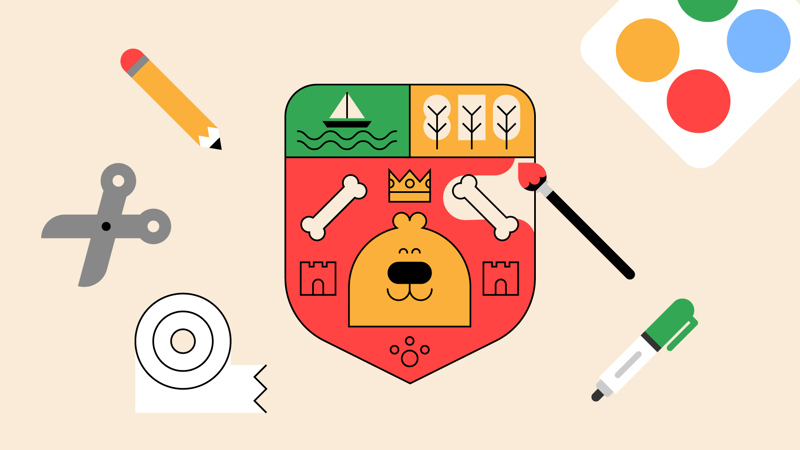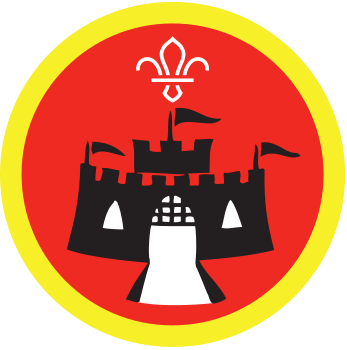
Changing your coat
You’ll need
- Pens or pencils
- A4 paper
Before you begin
- You may want to find some examples of coats of arms specific to your area to show everyone. These can be found in a variety of places from city council logos, flags, old books, village or town signs, statues to stained glass windows.
Discover coats of arms
A coat of arms is another word for the design which would have been printed on knights’ shields – but we can still find them today.
- Everyone should get into a circle. If they have a uniform, they should put it on.
- Everyone should look at the person to their right. If they are a Cub, wearing a Cub uniform, they should have two badges on their arm, to show their District, and their County, Area, or Region. If they’re wearing another uniform (such as a school uniform), they may have a logo or badge on the front.
- What pictures are on these badges? Most District and County, Area, or Region badges will be based on local symbols (and sometimes coats of arms). Does anyone know where the images come from? Has anyone seen these symbols anywhere else? Has anyone seen any other symbols or coats of arms in their local area?
- If the person leading the game has any examples, they should show everyone. Everyone should look, and see what the different examples have in common, and what’s different. Does anyone know what different images represent?
Make a shield of your own
- Give everyone a piece of paper, and a pen. Everyone should draw a big shield shape that takes up most of the paper.
- Everyone should choose two (or more colours) for their shield. They should try to pick colours that stand out from each other.
- Everyone should choose an animal or object to decorate the shield with. The animal or object should represent a value or belief that’s important to them.
- Now they’ve chosen their colours and object, everyone should design their shield.
- Everyone should split into small groups, and show others their shield. How does it represent them? Are their shields like the coats of arms they looked at earlier?
Reflection
This activity helped you think about what you believe. How did you choose which animal to put on your shield? What is important to you – which qualities do you think it’s important to have in a friend, and which qualities would you like to develop in yourself? Why is it good to know what’s important to you? How did it make you feel to think about what is most important to you? How do we normally tell other people what we think is important, and what we believe (the clothes we wear, the things we buy, what we say, what we do)?
This activity also gave you a chance to respect others. Did you like looking at everyone else’s shields? What did you learn about other people? Did they value different things to you? Can you still be friends and work together? How can you show respect to people who value different things (for example, if someone thinks it’s really important to be organised, can you try not to leave things in a mess at their house)?
Safety
All activities must be safely managed. You must complete a thorough risk assessment and take appropriate steps to reduce risk. Use the safety checklist to help you plan and risk assess your activity. Always get approval for the activity, and have suitable supervision and an InTouch process.
- We’ve included a shield generator – anyone who’s stuck (or who finds coming up with ideas tricky) can use this to make their shield.
- You could also use magazines and papers to collage your coats of arms – why not use local newspapers, to make a shield based on local imagery?
- If you want to, you could go for a walk or a hike and try to spot any examples of coats of arms. Use the ideas of where you may find them to help.
No one should have to share anything they don’t want to – people can use the shield generator if that makes them feel more comfortable.
All Scout activities should be inclusive and accessible.
